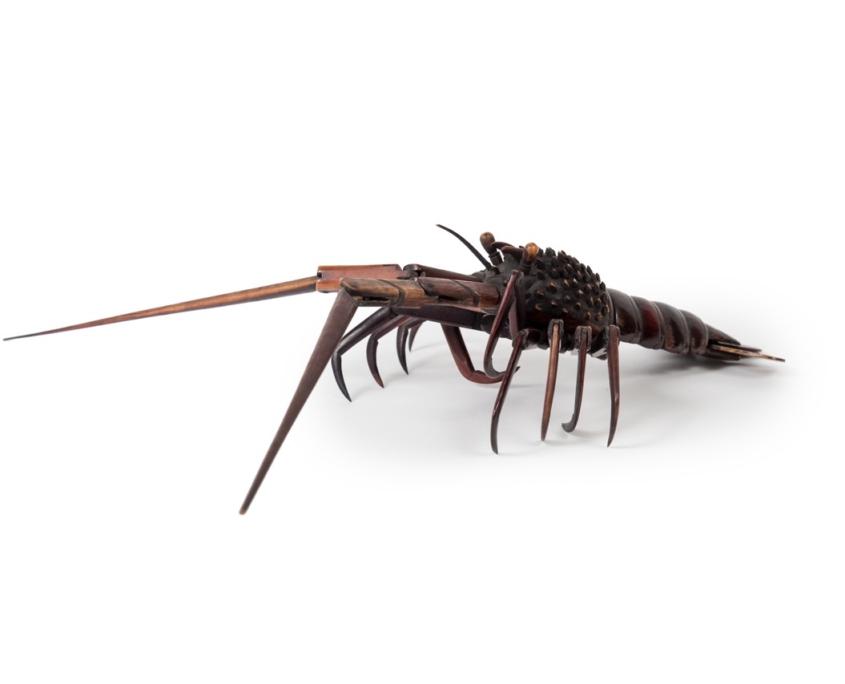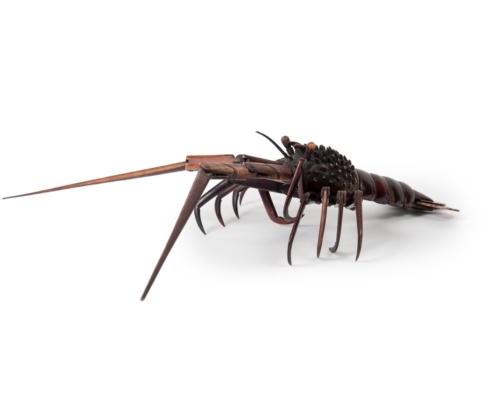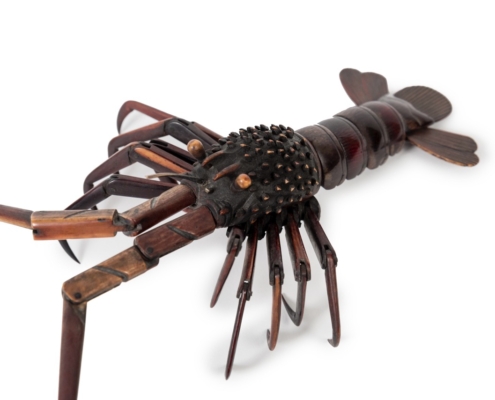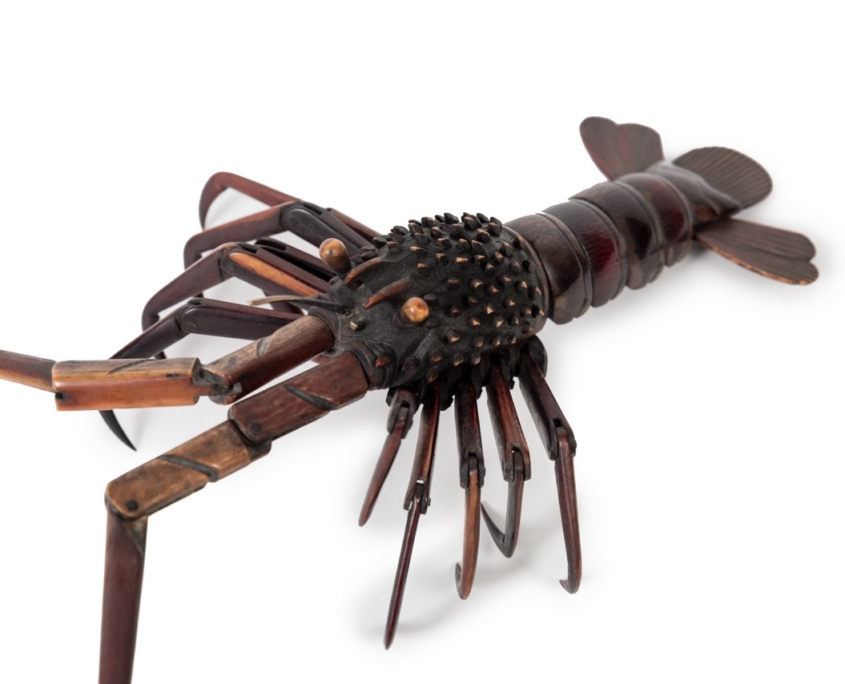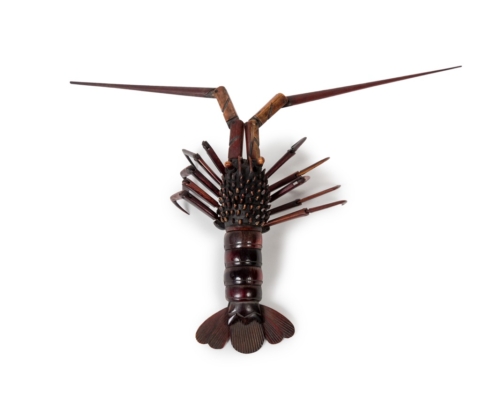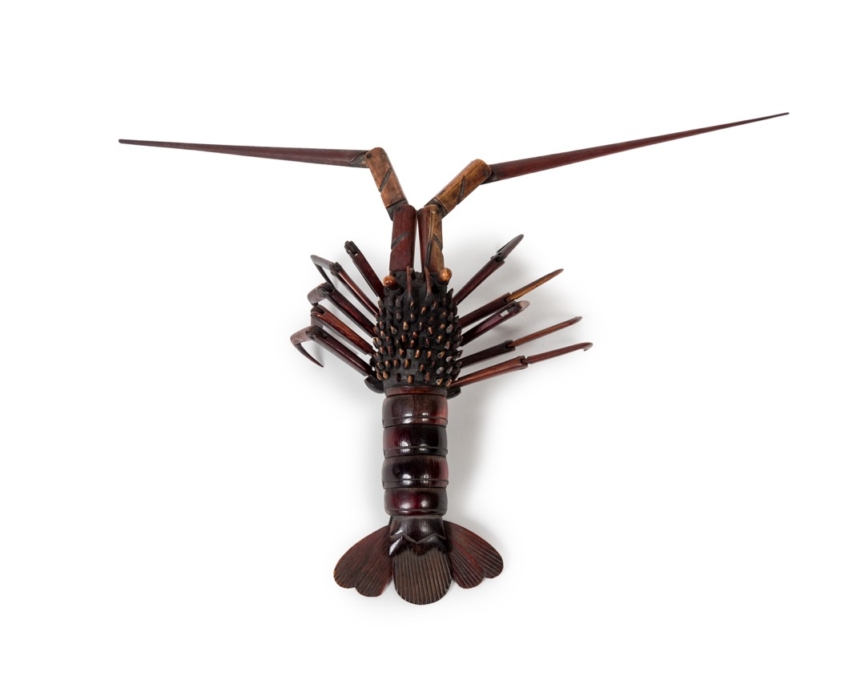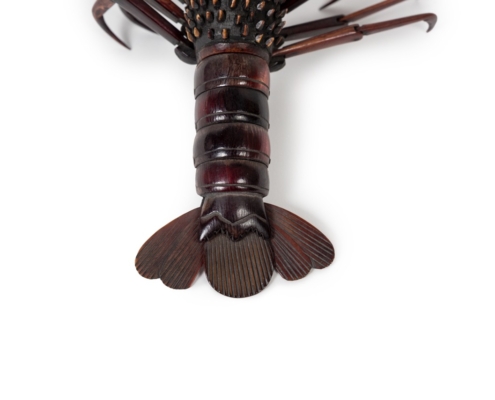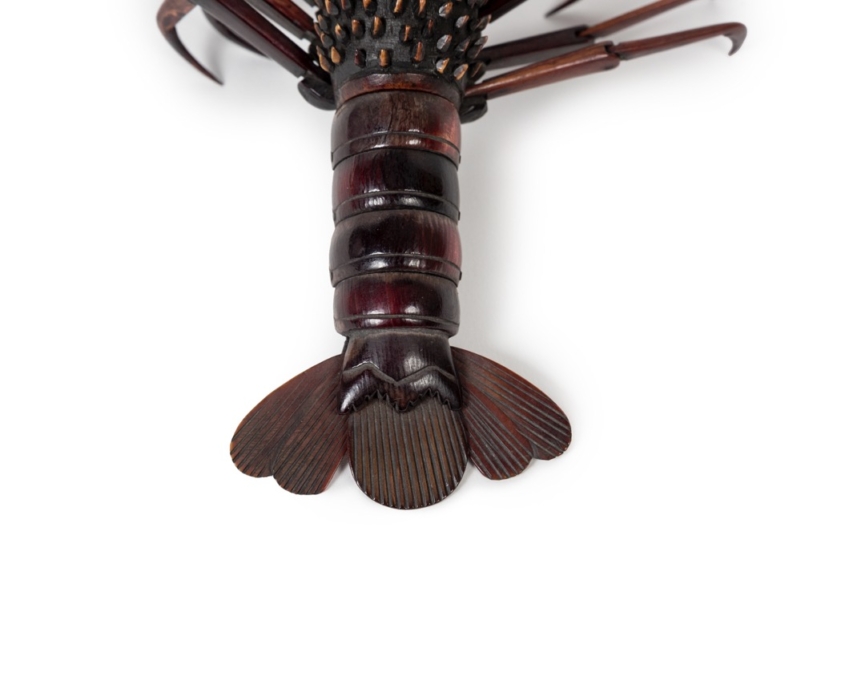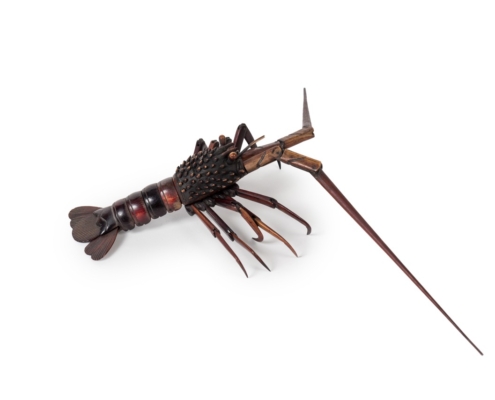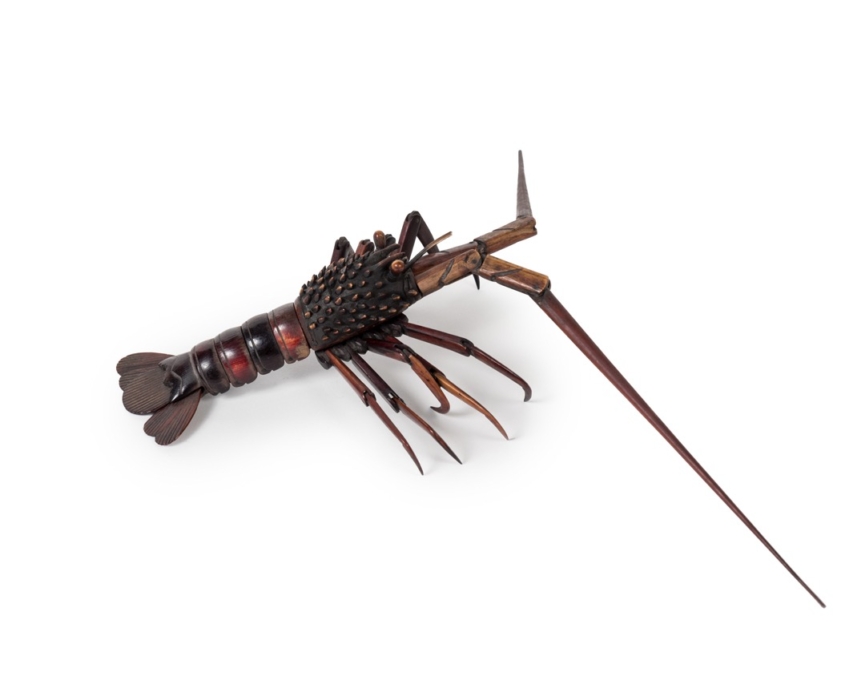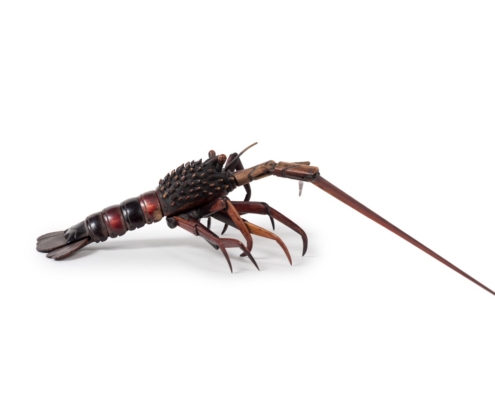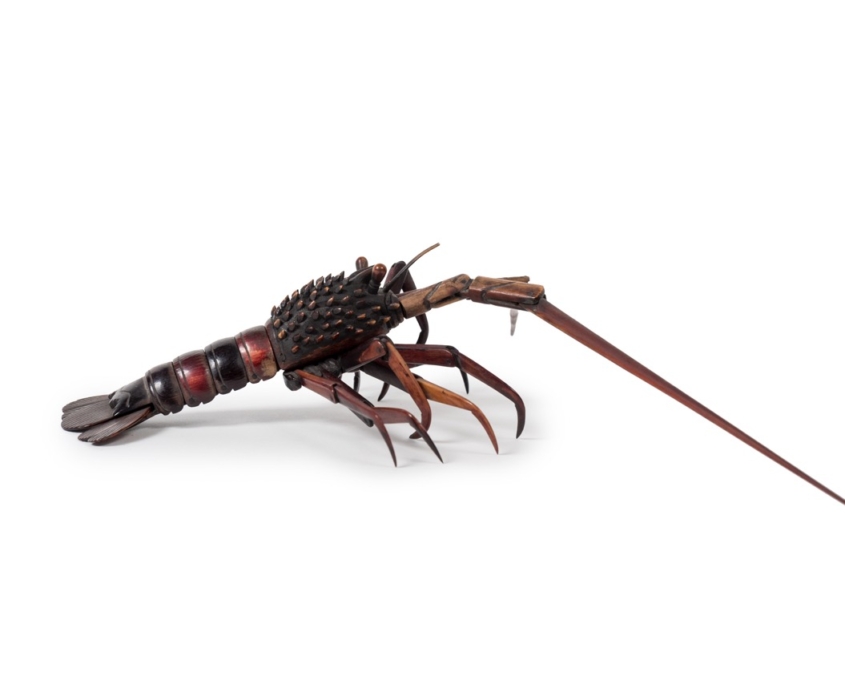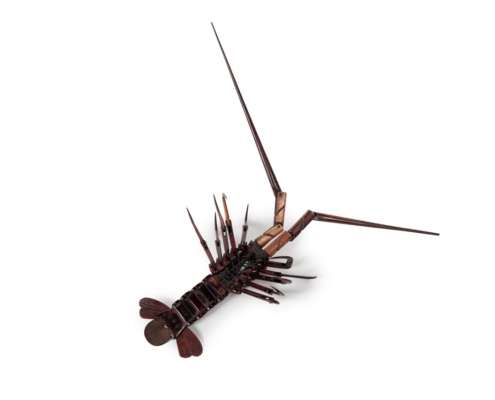Jizai okimonoof an articulated wooden lobster. This one is a Japanese spiny lobster(ise-ebiin Japanese), a lobster species of Pacific Ocean that grows upto around 12 in (30 cm). It is a popular item in high-class Japanese cuisine. Wooden jizai okimono are quite rare. They are mostly made of metal (iron, copper, silver, shakudô, etc.). In 1876, the Haitōrei decree was proclaimed, prohibiting the use of swords by anyone other than the military and the police. The aim of this measure was to reduce the influence of thesamurai, modernise the imperial army and avoid a second revolt similar to the Boshin War. The ban led to a decline in the production of katanas and armour. Many blacksmiths found themselves forced to renew their skills or turn to other trades. Many specialised craftsmen began making tools, knives and even bells and chimes (furin). However, one singular art form stands out from this complex transition period: jizai. When the most meticulous armourers, responsible for making kabuto(helmets) and maedate(family ornaments, usually in bronze, used as coats of arms), found themselves without customers, they came up with the idea of producing very fine sculptures made in nature, combining the striking realism of certain maedatewith the articulatory engineering of the finest pieces of armour.Jizai Okimonoare realistic sculptures of animals, generally divided into the following categories: birds, crustaceans, insects, but also imaginary animals such as dragons andshachi (aquatic monster similar to fish). They are generally made from iron, shibuichi copper (an alloy of copper and silver) or shakudo(an alloy of copper and gold), but can also be made from deer antlers or ivory. Their bodies and limbs are articulated and can be moved in the same way as a livinganimal. This type of okimono(decorative object) is little known in Japan because they were mainly exported from the beginning of the Meiji period to the end of the Showa era.Jizai Okimono began to attract the interest of the Japanese public in October 1983, when several models were presented at a special exhibition on “Japanese Metal Art” held at the Tokyo National Museum. The pieces on display included a dragon, a falcon, a shachi, a carp, a lobster and a crab. Shortly afterwards, a number of Jizai animals from the British Museum were included in the exhibitions “Masterpieces of Japanese and Chinese Art from the British Museum” at the Tokyo National Museum in 1987 and “Daei Hakubutsukan Hizo Edo Bijutsu Ten (Exhibition of Edo Period Art from the BritishMuseum Collections)” at the Tokyo Metropolitan Art Museum in 1990.Public interest in Jizai okimono continued to grow when the exhibition “The Art of East and West at World Fairs” was held from July 2004 to March 2005 at the Tokyo National Museum, the Osaka Municipal Museum of Art and the Nagoya City Museum, and included a dragon, a carp and a praying mantis from the Japanese collections, as well as a lobster on loan from the Linden Museum in Stuttgart.As far back as 1888, the French magazine “Le Japon Artistique” published detailed illustrations and an explanation of an articulated frog made by Myochin Muneharu. They also appeared in Japanese art auctions in the early days.Insects are basically made in the same way as crustaceans, joining the legs with rivets. The wings of butterflies and dragonflies are attached to the body with hinges to make them mobile, while those of beetles and praying mantises, which cover the lighter wings, can be opened to spread the more fragile wings.Signature ofShôroku (笑緑)below, under the tail of the lobsterJapan, Shôroku (笑緑) -Meiji Era (1868-1912)Height: 1.2 in / 3.5 cm -width: 3.15 in / 8 cm (unfolded antennae: 9.8 in / 25.5 cm) -depth: 6.3 in / 16.5 cm (unfolded antennae: 7.5 in / 19 cm)
ABOUT
Sylvie Tiago is passionate about the decorative arts, with a predilection for Asia and especially Japan, of which she shows both contemporary pieces and 17th-century screens.
Read more •••
GALERIE TIAGO
36 Rue de l’Université,
75007 Paris
Tel. +33 (0)6 60 58 54 78




